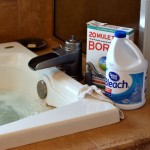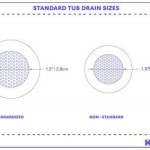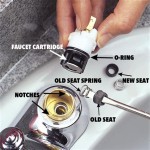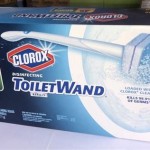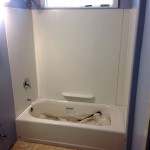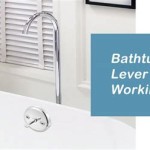What Is The Average Cost Of Walk-In Bathtubs?
Walk-in bathtubs are becoming increasingly popular, particularly among elderly individuals and those with mobility challenges. These specialized bathtubs offer enhanced safety and accessibility, allowing users to bathe independently and comfortably. However, a significant factor influencing the decision to purchase a walk-in bathtub is its cost. Determining the average price requires a comprehensive understanding of the various factors that contribute to the overall expense, including the type of tub, features, installation, and geographical location.
The cost of a walk-in bathtub can vary considerably depending on several variables. The basic bathtub model will inevitably be less expensive than one with high-end features like hydrotherapy jets or chromatherapy. The cost of installation, an often-overlooked aspect, can also significantly impact the overall price. Regional differences in labor costs and the complexity of the installation process contribute to fluctuations in the final expense.
Generally, the cost spectrum for a walk-in bathtub can range from around $3,000 to $10,000 or more for higher-end models with extensive features and complex installation needs. This figure represents the combined cost of the bathtub itself and the required installation services. It is, therefore, critical to consider all these factors when budgeting for a walk-in bathtub to avoid unexpected expenses.
Accurately determining the average cost necessitates a detailed examination of different models, functionalities, and installation intricacies. Understanding these elements contributes to informed decision-making, enabling potential buyers to select the most appropriate walk-in bathtub that meets their specific needs and budget constraints.
Factors Influencing Walk-In Bathtub Costs
Several factors contribute to the overall cost of a walk-in bathtub. Recognizing these influences is crucial for developing an accurate budget and selecting the most suitable option. The primary factors include the type of tub, included features, and the complexities of installation. Examining each factor separately provides a more comprehensive understanding of the overall pricing structure.
1. Type of Walk-In Bathtub: Different types of walk-in bathtubs are available, each designed to cater to various needs and preferences. These types significantly impact the price. Standard walk-in tubs, for instance, usually feature a low step-in threshold and a watertight door, offering basic accessibility. These models tend to be the most affordable. Bariatric walk-in tubs are designed for individuals with larger body types, and they typically require more materials and structural support, therefore costing more. Wheelchair-accessible walk-in tubs are designed to allow a user to transfer directly from a wheelchair. These designs often involve modifications to the bathroom layout and may require significant space, thus elevating the price.
Soaker tubs, a basic type of walk-in tub, offers the essential features of accessibility and safety. These tubs are primarily designed for a comfortable soaking experience. The price of a soaker tub is generally on the lower end of the spectrum compared to models with additional features. Whirlpool tubs incorporate hydrotherapy jets that massage the body, promoting relaxation and relieving muscle tension. The inclusion of these jets and the associated plumbing increases the overall cost. Air tubs function similarly to whirlpool tubs but use air jets instead of water jets. These jets provide a gentler massage and can be easier to clean. The incorporation of air jets and the related technology can also contribute to a higher price point. Combination tubs feature both whirlpool and air jets, providing a customizable bathing experience. The advanced technology and dual functionality make these the most expensive type of walk-in tub.
2. Features and Accessories: Additional features and accessories can significantly impact the price of a walk-in bathtub. Basic models typically include essential safety features, while more advanced models may offer added functionalities that enhance comfort and therapeutic benefits.
Heated seats are a popular feature that adds to the overall comfort of the bathing experience, particularly for individuals sensitive to temperature changes. These seats maintain a consistent temperature, preventing discomfort during the filling and draining process. Built-in grab bars provide additional support and stability, reducing the risk of falls while entering or exiting the tub. These bars are ergonomically designed and strategically placed for optimal safety. Rapid-drain systems are designed to quickly empty the tub after use, reducing the waiting time and minimizing the risk of feeling cold or uncomfortable. The speed and efficiency of these systems can vary, affecting their price. Shower attachments provide added versatility, allowing users to shower while seated in the walk-in tub. These attachments often include adjustable showerheads and temperature controls for enhanced convenience. Chromatherapy, which uses colored lights to promote relaxation and well-being, is another premium feature that can increase the cost of the bathtub. This feature is often integrated into high-end models.
3. Installation Costs: Installation costs represent a significant portion of the overall expense associated with acquiring a walk-in bathtub. The complexity of the installation process, the existing plumbing configuration, and the need for potential modifications to the bathroom layout all influence the final installation price.
Plumbing modifications are often necessary to accommodate the specific requirements of a walk-in bathtub. This may involve rerouting pipes, installing new fixtures, or upgrading the water heater to ensure adequate hot water supply. Electrical work is required for walk-in bathtubs with features such as heated seats, hydrotherapy jets, or rapid-drain systems. A licensed electrician must ensure that these connections are safe and compliant with local codes. Bathroom modifications may be necessary to create sufficient space for the new walk-in bathtub. This may involve removing existing fixtures, reconfiguring the layout, or even expanding the room's square footage. The complexity of these modifications can substantially increase the overall cost. Permit fees are also a consideration, as local building codes often require permits for plumbing and electrical work. The cost of these permits varies depending on the municipality. Finally, labor costs are determined by the hourly rate charged by the plumbers and contractors involved in the installation process. These rates can vary significantly based on location and experience level. The complexity of the project also impacts the time required completing the installation, thus influencing the total labor costs.
Strategies for Managing Walk-In Bathtub Costs
Given the significant investment required for a walk-in bathtub, it's crucial to implement strategies for managing the costs effectively. By considering various options and taking proactive steps, potential buyers can minimize expenses while still acquiring a suitable and safe bathing solution. Price comparisons, exploring financing options, and considering alternative mobility assistance devices should be evaluated.
1. Obtain Multiple Quotes and Compare Prices: One of the most effective strategies for managing walk-in bathtub costs is to obtain quotes from multiple suppliers and installation professionals. Price variations can be significant, and comparing quotes allows potential buyers to identify the most competitive pricing while ensuring quality and reliability.
Contact at least three to five different walk-in bathtub suppliers to obtain detailed quotes. Ensure the quotes include the price of the bathtub, any additional features or accessories, and estimated installation costs. Compare the quotes carefully, paying attention to the specifics of each offer. Consider not only the price but also the reputation and experience of each supplier. Check online reviews and ask for references to gauge their reliability. Negotiate with suppliers to potentially lower the price. Be prepared to discuss your budget and any specific needs or concerns. It is possible that suppliers may offer discounts or incentives to secure your business. When comparing total cost, it is vital to understand that the cheapest option is not always the best. Consider the quality of the bathtub, the warranty offered, and the reputation of the installer to ensure long-term satisfaction. It is prudent to ask for a detailed breakdown of costs, including materials, labor, and permits. This transparency helps in identifying potential areas for negotiation or cost savings.
2. Explore Financing Options and Government Assistance Programs: Walk-in bathtubs can represent a significant financial investment. Exploring different financing options and government assistance programs can make the purchase more manageable. Several resources are available to help individuals afford these necessary safety devices.
Personal loans can be used to finance the purchase and installation of a walk-in bathtub. These loans typically offer fixed interest rates and repayment terms. Research interest rates and terms from different lenders to find the most favorable option. Home equity loans or lines of credit can be a viable financing option for homeowners. These loans use the equity in your home as collateral, potentially offering lower interest rates than personal loans. Specialized financing programs are sometimes offered by walk-in bathtub manufacturers or retailers. These programs may include promotional interest rates or flexible repayment schedules. Investigate these options thoroughly. Medicaid and Medicare may offer assistance for durable medical equipment, including walk-in bathtubs, under certain conditions. Research eligibility requirements and application procedures. State and local government programs often provide financial assistance for home modifications that improve accessibility for seniors and individuals with disabilities. Contact your local Area on Aging or disability services office for information. Non-profit organizations may also offer grants or financial aid for home modifications. Research organizations such as the National Council on Aging or the United Way for potential assistance.
3. Consider Alternative Mobility Assistance Devices: While walk-in bathtubs offer enhanced safety and accessibility, they represent a significant financial investment. Before committing to a purchase, consider alternative mobility assistance devices that may provide similar benefits at a lower cost.
Shower chairs and benches provide a safe and comfortable seating option in the shower. They are relatively inexpensive and easy to install. Transfer benches allow users to sit outside the shower and then slide into the shower, reducing the risk of falls. These benches are particularly useful for individuals with limited mobility. Grab bars can be installed in the shower or bath area to provide additional support and stability. They are a simple and cost-effective way to improve safety. Adjustable showerheads allow users to control the water flow and direction, making it easier to shower while seated. Handheld showerheads offer even greater flexibility and convenience. Raised toilet seats can make it easier to sit down and stand up from the toilet, reducing strain and improving bathroom safety. Assess the user's specific needs and mobility limitations to determine the most appropriate alternative devices. Consultation with an occupational therapist can provide valuable insights and recommendations.
Long-Term Value and Considerations
Despite the initial cost, a walk-in bathtub can offer long-term value, improving safety, independence, and overall quality of life for individuals with mobility challenges. However, assessing the long-term benefits and potential drawbacks is crucial before making a purchase decision. Considerations should extend beyond the initial cost, encompassing the impact on health, well-being, and home value.
The primary benefit of a walk-in bathtub is enhanced safety. The low step-in threshold and built-in safety features significantly reduce the risk of falls, which are a leading cause of injury among seniors. The ability to bathe independently can greatly improve an individual's self-esteem and overall well-being. Maintaining personal hygiene is essential for physical and mental health. Hydrotherapy jets can provide therapeutic benefits, such as pain relief, improved circulation, and reduced muscle tension. Regular hydrotherapy sessions can enhance physical comfort and overall health. A walk-in bathtub can increase the value of a home, particularly in areas with a high population of seniors or individuals with disabilities. Potential buyers may be willing to pay a premium for a home with accessibility features. Walk-in bathtubs are generally durable and require minimal maintenance, ensuring long-term reliability. Proper cleaning and occasional inspections can help extend the lifespan of the bathtub.
A walk-in bathtub requires a significant upfront investment, which may be a barrier for some individuals. It may be necessary to modify the bathroom to accommodate a walk-in bathtub, which can add to the overall cost. The tub may take longer to fill and drain than a standard bathtub, requiring patience and potentially increasing water consumption. Some individuals may find the enclosed space of a walk-in bathtub claustrophobic or uncomfortable which can be a problem for some people.
Before investing in a walk-in bathtub, carefully assess the long-term benefits and potential drawbacks. Consider the individual's specific needs, budget constraints, and the impact on their overall quality of life. By evaluating all these factors, potential buyers can make an informed decision that aligns with their priorities and ensures long-term satisfaction.

How Much Does A Walk In Tub Cost 2024 Guide Modernize

How Much Does A Walk In Tub Cost Kohler Bath

How Much Do Walk In Tubs Cost Forbes Health

2024 Walk In Tub Cost Installed S Kohler Safe Step American Standard

Average Walk In Bathtub S And Costs 2024

How Much Does A Walk In Tub Cost 2024 Guide Modernize

Kohler Walk In Tub Review And 2024

Cost To Install A Walk In Tub The Home Depot

How Much Do Walk In Tubs Cost 2024 Consumeraffairs

Pros And Cons Of Walk In Bathtubs
Related Posts

